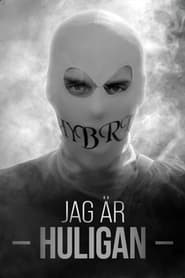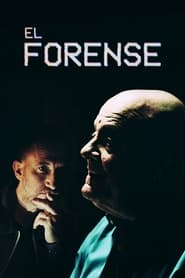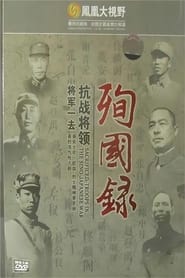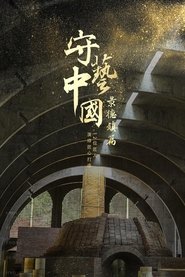Top Rated Documentary TV Series - Page 362
-
The Art of Film with Ian Nathan
2023
star 8Ian Nathan explores the many layers of the world of filmmaking, discussing each episode with filmmakers, cultural commentators, historians, authors and critics; what defines these stories, how they came to be, and who were the creative forces behind them. -
Tony Robinson's Marvellous Machines
2023
star 8Sir Tony Robinson travels the world to explore the most unusual and innovative machines and vehicles in this series packed with exciting stunts and epic challenges. -
Top Combat Pilot
2023
Top Combat Pilot
2023
star 10Dennis Quaid takes us inside the most elite aviation program in America. Known as WTI, the Marine’s version of Top Gun invites the best of the best combat pilots from every squadron in the country to prove their mettle. All are out to perfect their specialty, operating an unrivaled air fleet including F-18 Hornets, Huey, and Cobra Combat helicopters. The pilots who distinguish themselves earn a coveted invitation to return as an instructor…while those who slip up might not graduate at all. -
Rebuilding Black Wall Street
2023
star 10Morris Chestnut hosts this renovation docuseries chronicling the ongoing reconstruction of Tulsa's Greenwood District, which was destroyed in the 1921 massacre, while celebrating the personal and professional journeys of Black Wall Street descendants. -
Ignition
2012
Ignition
2012
star 6Ignition puts you in the driver's seat of the automotive world's latest car, truck and SUV offerings, courtesy of Motor Trend. Watch as our team of experts throttles, track tests and pushes the limits of these vehicles to harness their full capability. -
Phish: Dinner and a Movie
2020
star 9Announcing DINNER AND A MOVIE Tuesday Nights! Tomorrow night (and every Tuesday for a while), Phish proudly presents Dinner And A Movie: An Archival Video Series. We’ll be airing a full show in its entirety for free beginning at 8:30 pm ET at webcast.livephish.com or Phish’s Facebook page. -
Cities by the Sea
2016
Cities by the Sea
2016
star 10Cities by the sea are intrinsically defined by their position by the sea, an openness to the world, and a spirit of discovery and adventure. With the curious eyes of a stranger, the series wanders through: Barcelona, Dakar, Copenhagen, Tel Aviv, Vancouver, Hong Kong, Melbourne, St.Petersburg, Hamburg and Marseille. -
Les Fous du Funk
2015
-
Jag Är Huligan
2023
-
Point of No Return
2023
Point of No Return
2023
star 10From current events but with cinematic, intimate, and innovative storytelling, this series of short docs portrays the unprecedented transformation the world is undergoing. We focus on conflicts and stories that are at a point of paradigm shift, at a moment when the decisions that are made now can affect humanity and the planet. -
El forense
2023
-
C. G. Jung on Alchemy
2023
star 10Explore Carl Gustav Jung's private collection of rare books. Uncover the secrets of alchemy and psychology. Fathom the knowledge of the transmutation of the soul, Jung's excerpts, the hidden story behind the Red Book, Septem sermones and Gnostic wisdom, Aurora consurgens, the Secret of the Golden Flower, the Individuation process, Synchronicity and archetypes, Goethe - the alchemist and Paracelsus. The project has been realized in association with the Foundation of the Works of C. G. Jung. Filmed at paradigmatic locations like the House of C. G. Jung in Zurich, Eranos and other mystic places in Switzerland. -
Børn på druk
2023
-
Andrea Moda Formula - The craziest team ever
2023
star 7There’s only one team that managed to break all records for the worst team in Formula 1 history. And it hailed from the same country as Ferrari, Maserati, and Lamborghini. Andrea Moda Formula was based in the rolling hills of central Italy, where a fledgling shoe magnate had begun his successful business. Why Andrea Sassetti thought his footwear acumen should translate to Formula 1 success is a mystery, nonetheless, he paid the half-million dollar entry fee to join the Circus and cobbled together an unlikely group that managed to fail spectacularly. -
将军一去:抗战将领殉国录
2009
-
守艺中国之景德镇篇
2019
 Netflix
Netflix
 Amazon Prime Video
Amazon Prime Video
 Apple iTunes
Apple iTunes
 Apple TV Plus
Apple TV Plus
 Disney Plus
Disney Plus
 Google Play Movies
Google Play Movies
 Paramount Plus
Paramount Plus
 Hulu
Hulu
 HBO Max
HBO Max
 YouTube
YouTube
 fuboTV
fuboTV
 Peacock
Peacock
 Peacock Premium
Peacock Premium
 Amazon Video
Amazon Video
 The Roku Channel
The Roku Channel
 AMC+
AMC+
 Kocowa
Kocowa
 Hoopla
Hoopla
 The CW
The CW
 Vudu
Vudu
 Starz
Starz
 Showtime
Showtime
 PBS
PBS
 Pantaflix
Pantaflix
 FXNow
FXNow
 Tubi TV
Tubi TV
 Kanopy
Kanopy
 Comedy Central
Comedy Central
 Crunchyroll
Crunchyroll
 Microsoft Store
Microsoft Store
 Redbox
Redbox
 Sun Nxt
Sun Nxt
 ABC
ABC
 DIRECTV
DIRECTV
 Crackle
Crackle
 Fandor
Fandor
 Plex
Plex



















